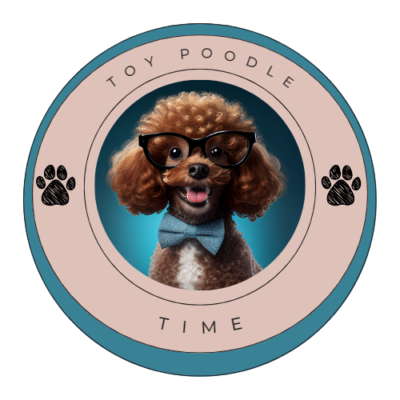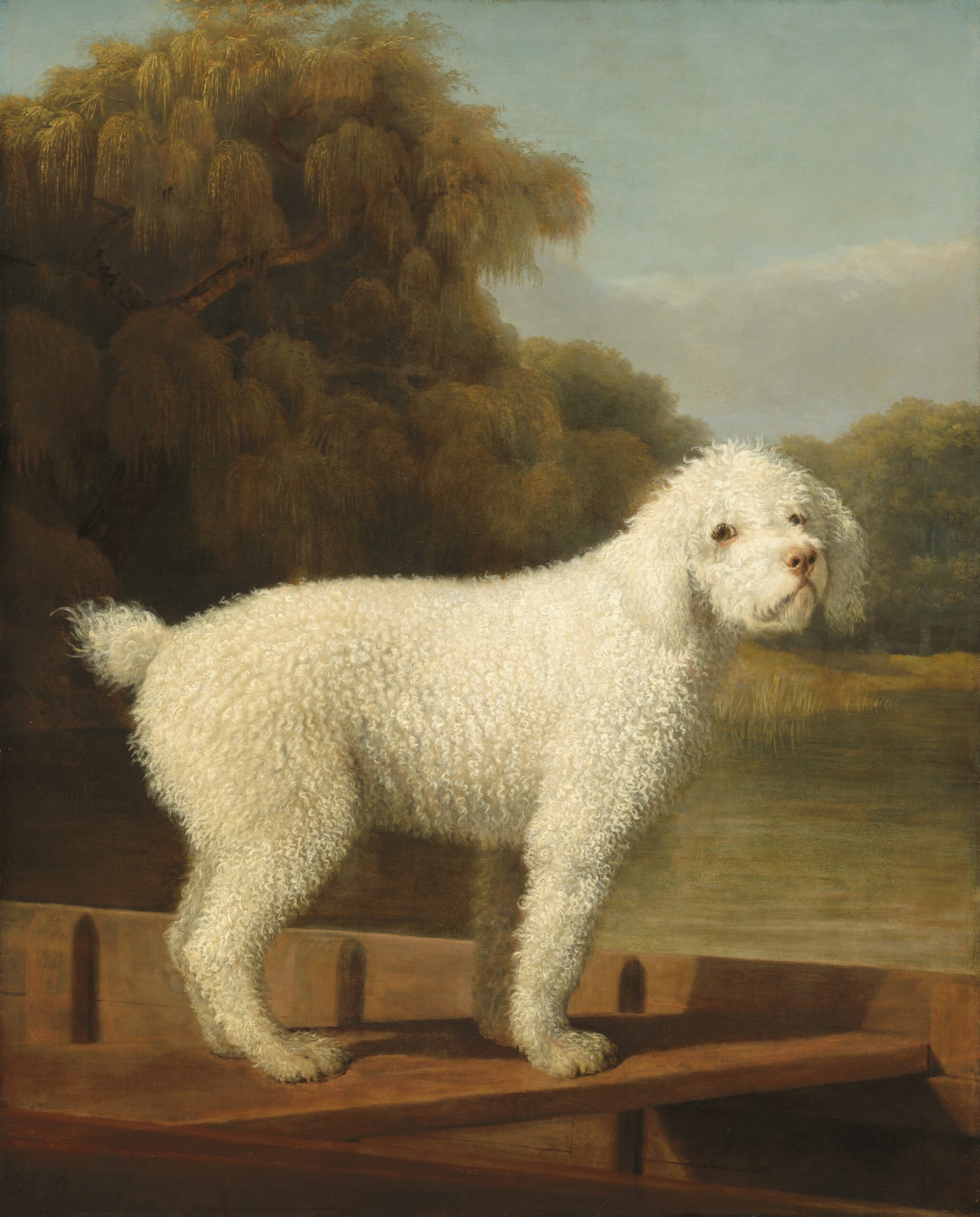 Poodles are one of the oldest breeds and one of the first breeds to be recognized by The Kennel Club of UK (KC) and the American Kennel Club (AKC), two of the most prestigious kennel clubs in the world. The history of the Poodle is fascinating, and the popularity of Poodles is not new. These dogs have been crowd pleasers for centuries, memorialized in paintings, sculptures, books, movies, etc. If you want to drive yourself a little batty, start trying to pinpoint the exact lineage of the Poodle.
Poodles are one of the oldest breeds and one of the first breeds to be recognized by The Kennel Club of UK (KC) and the American Kennel Club (AKC), two of the most prestigious kennel clubs in the world. The history of the Poodle is fascinating, and the popularity of Poodles is not new. These dogs have been crowd pleasers for centuries, memorialized in paintings, sculptures, books, movies, etc. If you want to drive yourself a little batty, start trying to pinpoint the exact lineage of the Poodle.
If you have ten different authors, with ten different books, you will most likely get ten different theories as to how Poodles came about. There is much debate as to the origin of Poodles, but these are some of the most popular theories. If anyone has any information they would like to add, I’d love to hear from you! So here goes….
Where did Poodles Come From?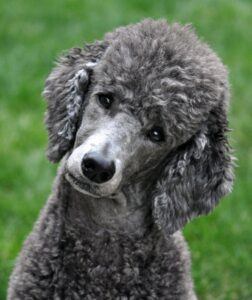
Some believe the Poodle originated in France where it is called the Caniche, or “duck dog”, and possibly a descendant of the Barbet and Hungarian Water Hound. The Federation Cynologique International (FCI), the world’s largest canine organization, promotes Poodles as originating from France, it is, after all, the national dog of France, and many people even call them French Poodles. Others believe the Poodle descended from Russia. Still, others believe the Poodle hails from Germany. In fact, the German word pudel or pudelin means “to splash in the water” or “puddle”. But Poodle history does not seem to be that easy and linear. There are many that believe the Poodle actually came from all three countries, each contributing to the Poodle that we know today. In fact, Poodles are, especially Toys, one of the most genetically diverse breeds known. This means there are a whole lot of dog breeds that went into making our beloved present-day pet.
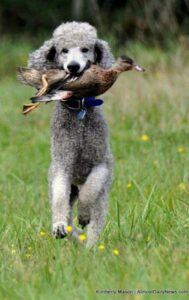 History of the Poodle
History of the Poodle
Poodles were originally bred as a hunting dog used to retrieve waterfowl. Their incredible intelligence, athletic ability, and swimming skills made them the perfect dog for this task. During the 14th century, Poodles were used by royalty and upperclassmen in Germany to retrieve downed waterfowl.
By the 15th and 16th centuries, the Poodle had made its way across Europe as one of the best retrieving breeds known. Stonehenge, a British cynologist in the 1800’s, wrote “…the Poodle is the favorite water dog among bird hunters in France, Denmark, Germany, and Russia”. By the 1700’s, the Standard Poodle was the main pet dog in Spain, and smaller Poodles were living the life of luxury with French royalty. During the 1700’s and 1800’s smaller Poodles were used as truffle hunters (a job they are still doing today). Toys were originally white or primarily white with dark markings. Their white color helped identify them at night while working the forest as truffle hunters in France and England, and their keen sense of smell helped them excel at finding these valuable morsels. Just like their larger brothers, Miniature and Toy Poodles are incredibly intelligent, easily trainable and love learning tricks. The Gypsies capitalized on these traits and began selectively breeding them to improve their build and agility for difficult circus tricks. Gypsies would groom and dye their poodles in wild eye-catching styles and used them as circus performers for such tricks as tightrope walking, balancing acts, acting roles, even magic tricks.
 By the 1700’s, Poodle companions were all the rage. People took a cue from the gypsies and began grooming their Poodles in an array of styles. The art of Poodle trimming became so popular in fact, that “dog barbers” emerged and many made a successful occupation of it. Smaller Poodles became a status symbol among the French elite. The smaller poodle became a lapdog for nobility, and there are reports French kings during the 17th and 18th centuries that kept Poodles as their pets, and by the late 1700’s the Poodle had been named as national dog breed of France.
By the 1700’s, Poodle companions were all the rage. People took a cue from the gypsies and began grooming their Poodles in an array of styles. The art of Poodle trimming became so popular in fact, that “dog barbers” emerged and many made a successful occupation of it. Smaller Poodles became a status symbol among the French elite. The smaller poodle became a lapdog for nobility, and there are reports French kings during the 17th and 18th centuries that kept Poodles as their pets, and by the late 1700’s the Poodle had been named as national dog breed of France.
The Poodle has the honor of being one of the founding breeds in multiple kennel clubs. The Kennel Club of UK (KC) officially recognized the Poodle in 1874, shortly after its formation in 1873 and The American Kennel Club (AKC) recognized the Poodle in 1887, shortly after its formation in 1884. Soon, these kennel clubs formed dog show competitions and it should come as no surprise that the Poodle has trotted away with multiple wins ever since. There are many other clubs devoted especially to our beloved Poodle. The Poodle Club of America, formed in 1931, has been instrumental in writing and revising U.S. breed standards, the quintessential description of what makes a Poodle a Poodle.
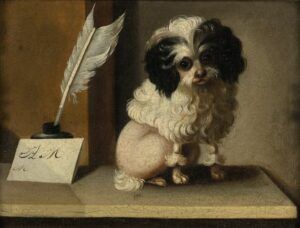 History of the Toy Poodle
History of the Toy Poodle
Toy Poodles existed at the same time as other Poodle varieties. They may actually be the oldest variety of Poodle. While the Standard Poodle was bred as a hunting dog, the Toy and Mini Poodles functioned mainly as companions. Small poodle-like dogs have been depicted in art as early as the 1st century. Sporting their ancient lion trim, they adorned monuments and tombs and could also be found on ancient Greek and Roman coins.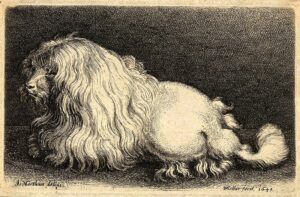
There are some conflicting reports surrounding Toy Poodle origin, maybe because the terms miniature and toy have been used interchangeably throughout history. Earlier paintings and drawings depict small Poodles as about the size of small present-day Minis. The tinier Toy Poodle has been depicted in art since the 1800’s. Many believe the smaller Minis were bred with the Maltese and/or Havanese breeds in France during this time to create the tiny Toy Poodle, and DNA evidence strongly supports this. We aren’t the only ones that love this smaller version, smaller Poodles have been family pets and companions for hundreds of years!
European Toys eventually made their way to the U.S. in the late 1800’s and were established as a breed in the United States in the 1896. The first Toy Poodle champion was crowned in 1910, but these early Toys did not look like the Toy Poodles we see today. They were much smaller, usually less than 5lbs, had shorter legs and longer bodies, resembling the Maltese. It wasn’t until 1943, that the AKC classified Toy Poodles as a variety of Poodle rather than as separate breed. This meant that Toys now needed to meet certain requirements (meaning they had to look like the Standards and Minis) within the Poodle breed standards, in order to compete. This paved the way for the Toy Poodle we recognize today.
Work History of Poodles
Poodles don’t have to sell themselves to anyone (we already know they’re amazing) but if they did, their resume would be remarkable! Poodles are incredibly versatile and adaptable, helping them to excel at all different jobs throughout history, not just as duck hunters, truffle hunters, and circus performers mentioned above. Not many breeds out there can beat the work history of Poodles.
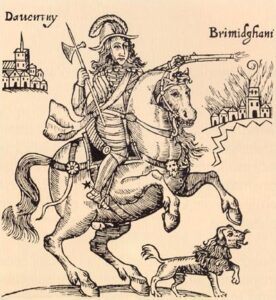 Poodles as Military Dogs
Poodles as Military Dogs
We know Poodles were originally bred as a hunting dog used to retrieve waterfowl. But did you know Poodles have also been used as military dogs? Since the 1600’s Poodles have served proudly alongside their humans. German soldiers used them for their superior tracking skills, and some believe those same soldiers may have brought the first Poodles to France. Numerous accounts exist about Prince Rupert of the Rhine and his faithful dog, Boye, during the English Civil War (1642-1651). The exploits of Boye were highly exaggerated, and depending on the author’s political views, Boye was labeled a hero to a witch. Moustache, a legendary Poodle in France, served during the French Revolution and Napoleonic Wars, and was even reputed to be present with Napoleon Bonaparte at the Battle of Marengo (1800). Much like Boye, Moustache’s adventures have been highly exaggerated. He died a hero in battle in 1811 in Badajoz, Spain. There are many more historical accounts of Poodles as military dogs. Even the United States Army classified Poodles as war dogs and employed them between 1942-1944!
Poodles as Search and Rescue Dogs
Poodles have been used as Search and Rescue dogs (SAR), they are after all retrievers, and their sense of smell helps them excel at this noble job. Not just any dog can be a SAR dog. They are elite athletes who train with a professional handler for years. It is a demanding job, and these dogs must be physically fit to withstand and adapt to the rough terrain and harsh conditions they may be working in. SAR dogs have no fear, they are focused on the task at hand and do not let distractions such as fear inhibit their ability in any way.
Poodles as Service Dogs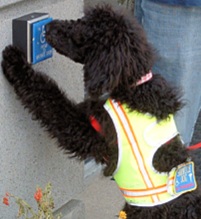
Poodles make wonderful service dogs. Many people suffering from medical issues such as diabetes trust their service Poodle to alert them when their blood sugar is low. Severe allergy sufferers rely on their service Poodle’s keen sense of smell to detect potentially life-threatening allergens. A Poodle’s coat is also as close to hypoallergenic as possible, so many dander allergy sufferers do just fine around Poodles. Larger Standard Poodles are employed as seeing eye dogs because of their taller stature, but Poodles of all sizes are wonderful emotional therapy dogs. Their friendly affectionate nature and acute emotional intuition make them ideal candidates for this position. Come on, who doesn’t feel better after petting a Poodle?
Poodles as Sled Dogs
Yes, Poodles have even competed as sled dogs! Is there no end to their versatility? John Suter began racing his team of Standard Poodles in the late 1970’s. With several first-place wins under his belt, Suter focused on the ultimate sled race, the Iditarod. In 1988, Suter and his team of Poodles finished the Iditarod 38th out of 45 teams, even beating some Husky teams! Suter continued competing with his team of Poodles until 1991 when new Iditarod guidelines came out stating that “only Northern breeds suitable for arctic travel will be permitted” thus ending the team’s career.
Poodles as Actors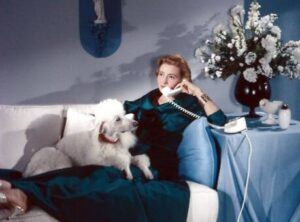
When it comes to films and TV, you might not think of Poodles as being actors (Toto, Lassie, and Benji first come to my mind, and yes, I just totally dated myself) but did you know Poodles are featured in more shows than almost any other breed? Poodles are great at taking direction and love being the center of attention so acting should be a breeze for these little hams. You could say that acting is in their blood from their gypsy circus performing days. Poodles have stolen the show in numerous movies including Best in Show, Breakfast at Tiffany’s, and Travels with Charley.
Poodles as Competition Show Dogs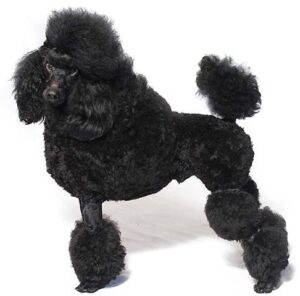
The Poodle has the honor of being one of the founding breeds in both The Kennel Club of UK (KC) and The American Kennel Club (AKC). Shortly after their creations, these kennel clubs formed dog show competitions, and it should come as no surprise that the Poodle has trotted away with multiple wins ever since. The Poodle breed has won best in show at the prestigious Crufts six times. In 1966, the beautiful Toy Poodle, Oakington Puckhill Amber Sunblush (now that is a mouthful!), took home top prize. Then in 1982, another Toy Poodle, Grayco Hazelnut, pranced away with Best in Show. The Poodle also has the honor of being the 2nd most winning breed of all time at Westminster for Best in Show, the highest distinction in American dog competitions. Poodles have won Westminster’s Best in Show 10 times, 2 of those titles claimed by Toy Poodles. In 1956, Wilber White Swan (first toy dog to win Best in Show ever) and in 1961, Cappoquin Little Sister have both been crowned Best in Show.
Poodles as Professional Athletes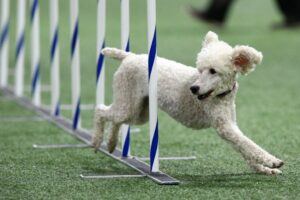
These guys love running, swimming, and retrieving, that’s what they were bred for after all, so it’s really no surprise that Poodles excel at agility course competitions. Agility competitions are obstacle courses designed to test a dog’s speed and accuracy by following their handler’s cues. Obstacles include weaving poles, tunnels, jumps and more. Poodles have been competing and winning in national and international agility competitions for years now. If you have the chance to go to a competition, I highly recommend attending, but there are also tons of YouTube videos as well. It’s amazing to see these athletes in action and how graceful and fast Poodles are. Poodles also shine in obedience competitions. These tournaments are designed for dogs to show how well they follow commands such as walking politely next to their handler, staying, jumping, and scent discrimination. Poodles love learning new tricks and pleasing their person, two skills that help them crush these events. Diving dogs, or dock diving, is another competition Poodles showcase their amazing athleticism. The purpose of these competitions is to see how high or how far the dog can jump from the dock into the water while trying to retrieve a toy. These are just a few of competitions offered that Poodles have been competing and winning in as professional athletes. Now I’m not saying your Toy Poodle is going to be able to run a marathon with you, but Toy Poodles are hardy little guys and are more than capable of excelling as professional athletes.
Poodles as Family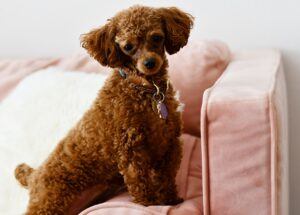
The Poodle’s longest occupation and of course the most important to us, is that of companion. Their unwavering loyalty and unconditional love have helped to place Poodles in the top ten of “most popular dog breed” year after year, and #1 in our hearts. From 1960-1982, Poodles held the title of most popular dog breed! Currently, they are ranked 5th most popular according to the AKC. That’s out of 197 dog breed folks, quite an accomplishment! As I sit here writing this blog, Fred, my tiny Toy Poodle, is quietly snoring away next to me, and I can’t help but think how lucky I am that he chose me as his human.
The history of the Poodle is fascinating to me. Until I got a Poodle as a pet, I never knew how incredible they were, and now I am continuously learning new and interesting facts. For instance, I never knew the Poodle was such an old breed or how many different jobs they’ve had through history. My intention is to present the facts, not fluff (I’ll leave the fluff to my Poodle). I’d love to hear from you! Please leave your comments or questions about Poodles below.
